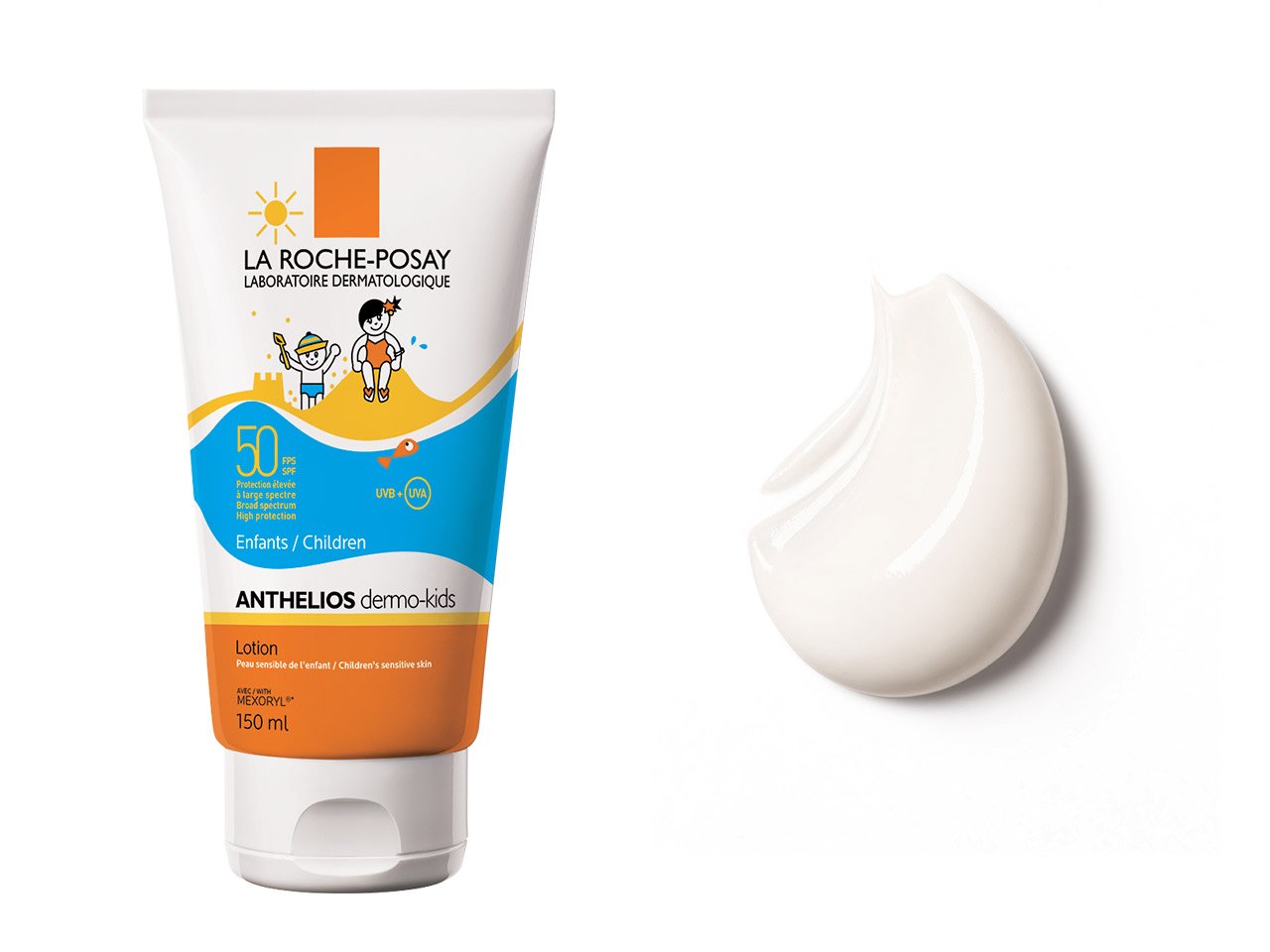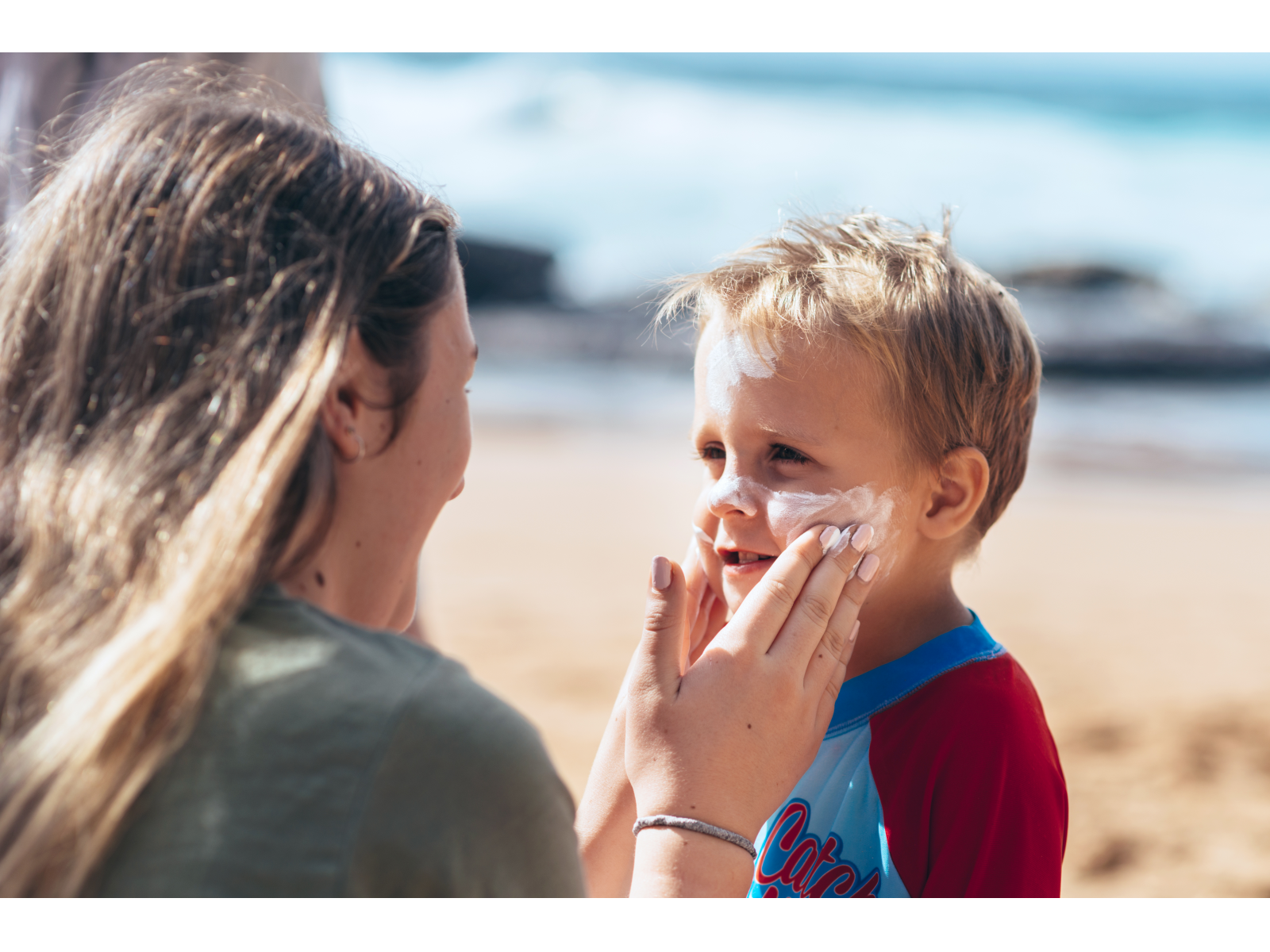With summer (finally) in full swing, it likely means you recently found yourself at a crossroads sunscreen aisle: Do you buy mineral or organic? Spray, lotion or stick? SPF 30, 50 or 60? Do kids really need kid-specific sunscreen?
To break down the complexities of SPF, we asked Aleyna Zarras, regional trainer and skin expert for La Roche-Posay, all of our burning sun care questions.
So, what is SPF?
A big myth out there is that SPF is a measurement of time, says Zarras. “The thought is the higher the SPF number, the more minutes you can spend carefree in the sun without reapplication,” she explains. Rather, SPF or “Sunburn Protection Factor” evaluates the UVB protection that the sunscreen provides.
“SPF is actually calculated [scientifically] by the quantity of UVB rays it takes for the skin to turn red” Zarras explains. UVA and UVB rays come from the sun but UVB are primarily what cause our skin to turn red and give us a sunburn when not protected properly.”
As per Health Canada guidelines, no matter what SPF is used, reapplication should be a minimum of two hours; sooner if swimming, sweating or toweling off.
What’s the difference between UVA and UVB rays—and how can we protect against both?
“UVA and UVB rays both cause damage to our DNA, which can cause skin cancer, but UVA goes further [into the skin],” says Zarras.
UVB rays account for about five percent of rays coming from the sun. They directly affect the epidermis of our skin (the outermost layer) and primarily cause sunburns, although they can also cause skin cancer. “To remember, we like to say ‘B’ for burning,” says Zarras. SPF protects your skin against these rays.
UVA rays account for the other 95 percent of rays. They affect not only our epidermis, but also the deeper dermal layer in our skin structure, Zarras explains. UVA rays cause things like accelerated aging, and immunosuppression—meaning they actually weaken our immune system and allow dormant viruses like cold sores to become active. These rays can also trigger allergic responses in our skin that might result in hives or a red rash. “Sometimes, people will think that the sunscreen they used is causing the allergic reaction; meanwhile, they were just using a product that didn’t have enough UVA protection in it,” Zarras says.
“If you see a sunscreen product that says “broad-spectrum,” what that means is that it protects you from UVB, UVA short, and UVA long rays, but the UVA protection overall could either be low, moderate or high” she says. “When you also see the Health Canada logo—which is the word UVA with a circle around it—this represents a minimum standard for a good UVA protection in accordance to Health Canada’s standards.” You definitely want a sunscreen that has both labels.
What level of SPF should I buy for my kids?
Dermatologists in Canada recommend using between SPF 30 and 60 for optimal protection for both kids and adults.
How do I choose between a mineral sunscreen and an organic sunscreen?
“Mineral filters work like a disco ball,” Zarras says. “They essentially disperse or deflect the UV rays in different directions, offering high UVB protection and moderate UVA protection. The majority of the rays will be scattered away from the skin—but a small amount of UVA rays could potentially be scattered into the skin.”
This is why when using a mineral sunscreen, it’s important to apply the recommended quantity to minimize penetration of those sneaky UVA rays. Zarras recommends looking for an enriched formula, which will protect against free radicals caused by UVA rays. Anthelios formulations include an antioxidant complex with vitamin E, which helps to combat free radical damage.
The other option is an organic (also known as chemical) sunscreen. “These sunscreens work like a sponge, absorbing the UV rays, transforming their energy and then releasing it in a non-harmful way.” says Zarras.
When choosing the right sun protection for you and your family, your best bet is to find a product that’s a right fit for you in regards to its texture, while ensuring it’s broad spectrum and shows the Health Canada UVA logo.
When should you reapply sunscreen?
To start, you want to apply sunscreen about 15-30 minutes before heading out into the sun. No matter what SPF you’re using, you have to reapply every two hours. If you’re swimming or sweating, read the label to find out how long your sunscreen remains water-resistance. Reapply as soon as the water-resistance times out, or immediately after towel drying. It’s also important to limit exposure to the sun’s rays between 11a.m. and 3p.m., when the sun is at its peak.
Are spray sunscreens safe to use?
Sprays are safe for everybody, as long as they’re used correctly.
“People assume that sprays are easier [than lotions], because you can just spray and go. That’s false,” cautions Zarras. “You must spread a spray evenly over the skin, to ensure all areas are protected. You want to ensure that you shake it really well, so that all of the filters are evenly dispersed. And you want to spray it generously, but close to the skin, about 10-15 centimetres away.”
Another important rule: Never spray directly on anyone’s face. First spray into the palm of your hand, and then apply to the face, behind the ears, and even the hairline. Sprays are particularly useful for re-application, as a follow-up to an initial layer of lotion when you’re out and about—although they shouldn’t be used in windy conditions.
Most sunscreens say not to apply them on children under the age of six months. Is sunscreen dangerous for babies?
“The fact is, a child up to six months of age should not be in direct sunlight, and so they shouldn’t need [sunscreen],” explains Zarras. This is why most sunscreens specifically say to not apply on children under the age of six months: It’s not because it is dangerous for them.
“When a baby is born, their skin is much thinner and delicate, and their melanocytes—which produce melanin (skin pigmentation)—are still developing,” she says.

Do I really need to buy kids’ sunscreen for my kid?
According to Zarras, it really depends on the formulation. “I’ll use the La Roche-Posay dermo-kids product as an example,” she says. “All of our sun protections are allergy-tested under dermatological control, but our dermo-kids sunscreen was also tested under paediatric control. We developed it with an anti-rubbing effect for a child’s delicate skin.”
“We know that children can be very finicky,” Zarras says. “This is great for parents because it glides easily leaving a leaving a translucent white film to allow even coverage before melting into the skin for a supple and dry finish. It’s also water, sweat and sand resistant.”
Bottom line: Kids’ sunscreens are optimized for kid-levels of activity, and for their delicate skin, but adult can use it, too!
What tips and tricks can parents use to get kids to cooperate with sunscreen application?
If the complaint is that it’s “too cold,” opt for lotion over a spray and warm it up in your fingers first before applying.
If they’re scared or uncomfortable, “you can also try to get [the kids] to participate in the application process,” suggests Zarras. “This might only work for some younger ones, but it’s a way to show them what you’re doing. Maybe they can apply it on certain areas by themselves, maybe on their arm or leg. Or afterwards, they can help apply it onto your arm. It depends on the child of course, but getting them involved could work!”
How can parents avoid getting sunscreen in kids’ eyes?
As mentioned before, never spray sunscreen directly in the face; spray in the hands first, and then carefully apply. Avoid the eye area directly when applying, even creams and lotions.
If the issue is that the sunscreen is dripping into their eyes when your kid is playing or swimming, try a stick format. “It’s ideal to use on the forehead; it’s less likely to drip, and stays put,” says Zarras. She also recommends a stick sunscreen for behind the ears, and even the lips, if the label says it’s safe to do so.
Which spots should parents be extra careful not to overlook?
Parents should ensure to protect the tops of the feet, which a spot on the body that is often overlooked, says Zarras. Other key points to cover: Neck, the ears, and the top of the head. In addition to sunscreen, ensure your child is wearing UV-rated clothing and a hat whenever possible.
Read more:
9 questions every parent has about sunscreen and hot weather
Best sunscreens for kids, as rate by the EWG
13 top mineral sunscreens for your whole family


